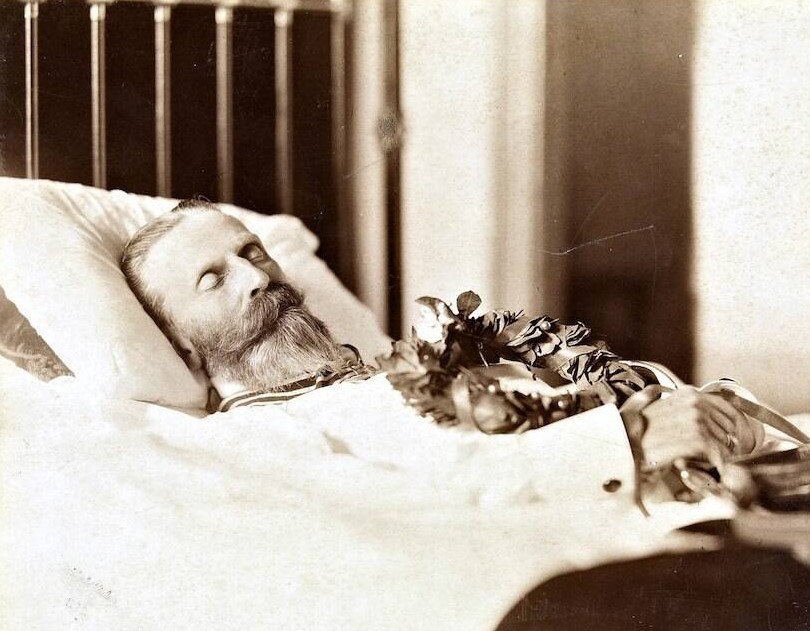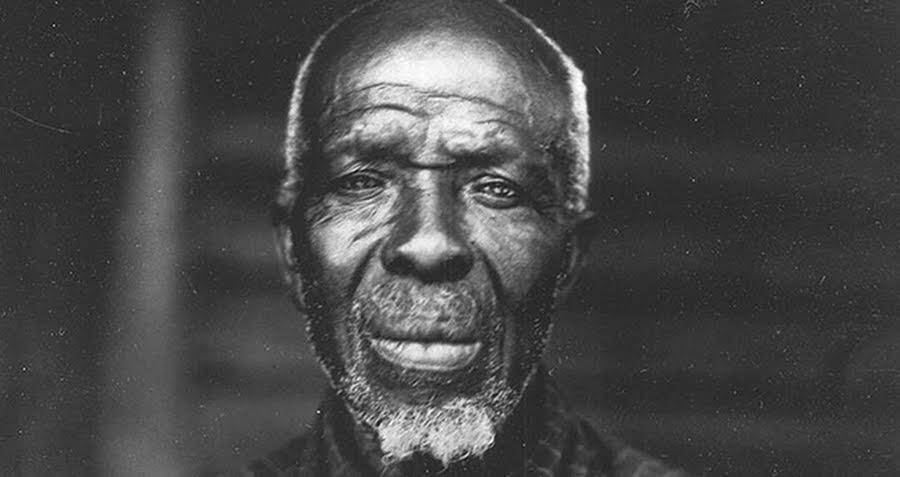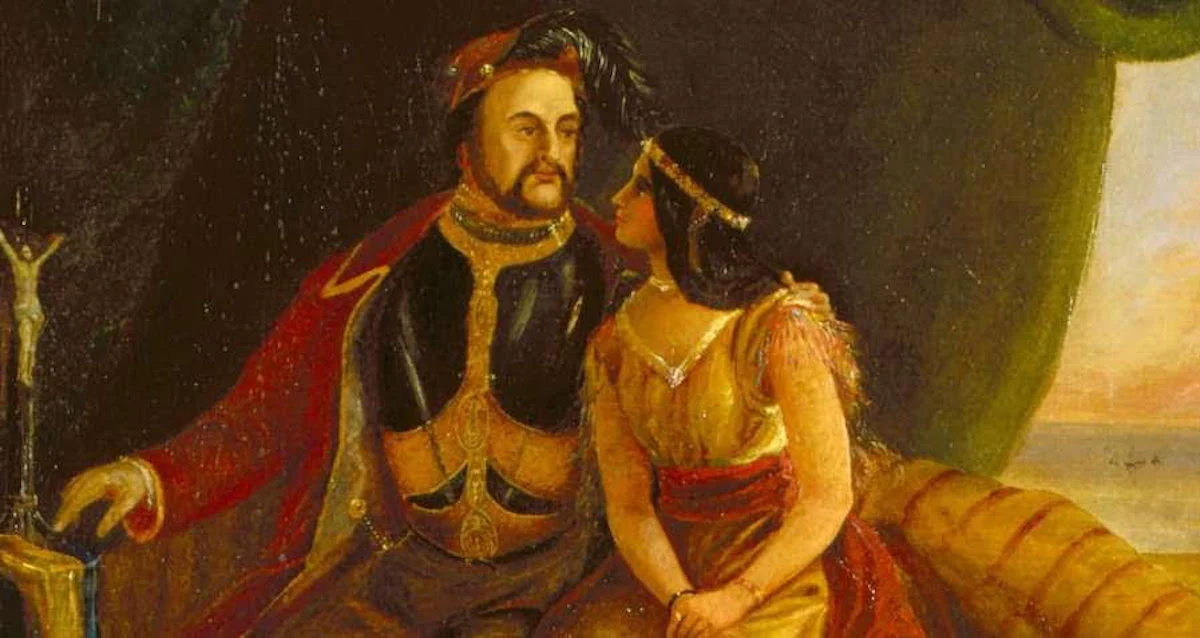Even now, images of death from the Victorian era persist as eerie relics, unsettling to contemporary sensitivities.
Due to elevated mortality rates and the widespread prevalence of diseases, death pervaded the Victorian era. In response, numerous individuals devised inventive methods to commemorate the departed, such as the creation of Victorian death photographs. Although it may seem morbid by present standards, many families employed post-mortem photos as a means to memorialize their dearly departed.
"It is not merely the likeness which is precious, but the association and the sense of nearness involved in the thing... the very shadow of the person lying there fixed forever!" quoted Elizabeth Barrett Browning, an English poet from the Victorian era, as she observed a post-mortem portrait.
In the Victorian era, a post-mortem portrait often served as an initial encounter with photography for many individuals. The relatively recent technological advancement provided a chance to preserve a lasting image of their departed loved ones, especially those who had never been photographed in life.
In contemporary times, Victorian death photos might be perceived as unsettling. However, in the 19th century, they served as a source of solace for individuals grappling with grief. Some of the most notable instances of this tradition can be observed here.
Why Did People Take Post-Mortem Photos?
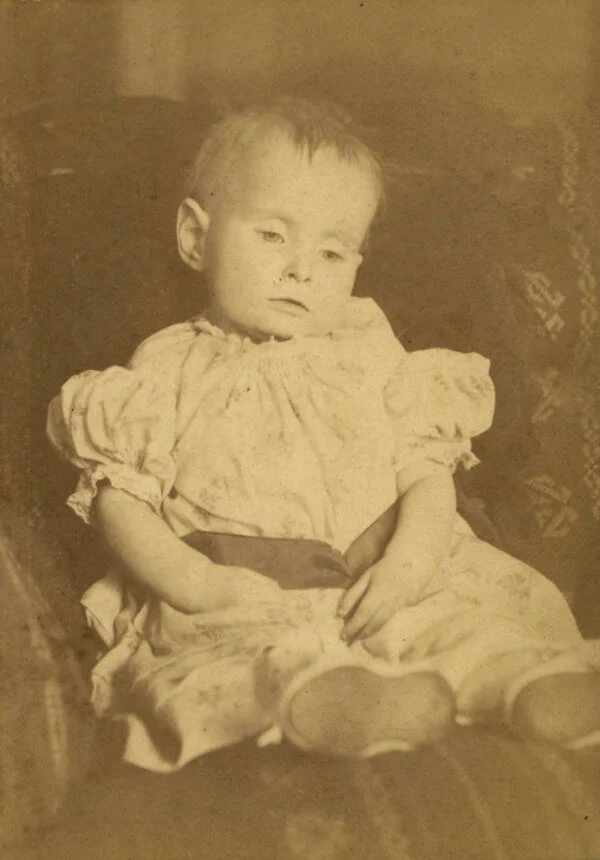
During the initial decades of the 19th century, photography emerged as a novel and thrilling medium. Consequently, there was a widespread desire to immortalize life's significant moments on film. Regrettably, one of the most frequently documented moments happened to be death.
Given the elevated mortality rates, the majority of individuals couldn't anticipate reaching beyond their 40s. Infants and children, in particular, faced heightened vulnerability when diseases spread. A lack of vaccines and antibiotics in that era meant that illnesses such as scarlet fever, measles, and cholera could prove fatal for young people.
The advent of photography provided a novel means to commemorate loved ones after their passing, with many Victorian death photos serving as a type of family portrait. These images frequently portrayed mothers holding their departed children or fathers solemnly overseeing their children's deathbeds.
A photographer remembered parents bringing a stillborn baby to his studio. "Can you photograph this?" The mother pointed to the photographer, revealing "a tiny face like waxwork" tucked inside a wooden basket.
The idea of crafting a post-mortem portrait existed long before the advent of photography. However, in earlier times, only the extremely affluent families could afford to commission artists to produce an illustration of their departed loved ones. The introduction of photography opened up the possibility for less affluent individuals to obtain a post-mortem image as well.
Photographers specializing in death imagery acquired the skill of arranging children in poses that conveyed the illusion of tranquil sleep, offering solace to mourning parents. Some photographers enhanced their daguerreotypes, an early photographic method creating finely detailed images on polished silver, by introducing a tint to infuse a touch of "life" into the subject's cheeks.
Grieving family members found profound solace in these images. Mary Russell Mitford, an English author, observed that her father's post-mortem photograph from 1842 possessed a serene, almost heavenly, calmness.
The Creation Of Post-Mortem Photos
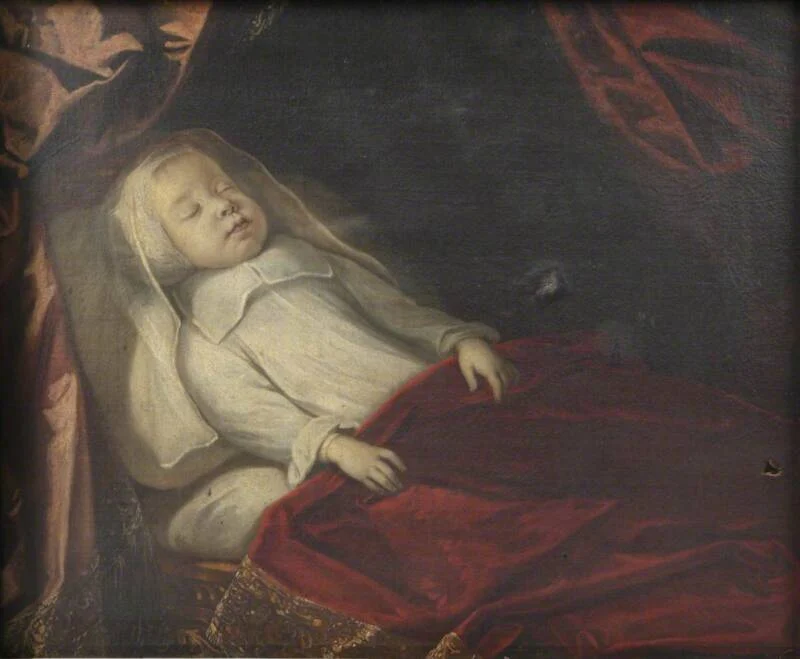
Capturing images of deceased individuals might appear macabre, yet in the 19th century, photographing the dead was often more practical than photographing the living, as the deceased subjects, being immobile, presented less of a challenge.
The slow shutter speed of early cameras required subjects to stay immobile for sharp image capture. During studio visits, photographers would occasionally use cast-iron posing stands to keep individuals in a fixed position.
Predictably, Victorian death photos are frequently recognizable due to their absence of blurriness. After all, the subjects in these portraits didn't blink or make sudden movements.
In contrast to numerous portraits captured in photo studios, post-mortem photos were typically taken within the confines of the home. As the practice of creating death portraits gained popularity, families devoted attention to readying their departed loved ones for the photoshoot. This involved tasks such as arranging the subject's hair or adjusting their attire. In certain instances, relatives even opened the deceased person's eyes.
Photographers and family members occasionally adorned the setting to convey the intended purpose of the photograph. In certain pictures, the deceased is surrounded by flowers, while in others, symbols representing death and the passage of time—such as an hourglass or a clock—serve as unmistakable markers designating the portrait as a post-mortem photograph.
Through the medium of Victorian death photos, families gained the illusion of control by immortalizing their departed loved ones on film. Despite the loss of a cherished relative, they could still influence the portrayal to accentuate a feeling of serenity and tranquility.
In certain instances, post-mortem photographs deliberately conveyed the semblance of life. Families had the option to request makeup to conceal the pallor of death, and certain photographers went as far as offering to paint open eyes onto the final image.
Beyond Victorian Death Photos: Masks, Mourning, And Memento Mori
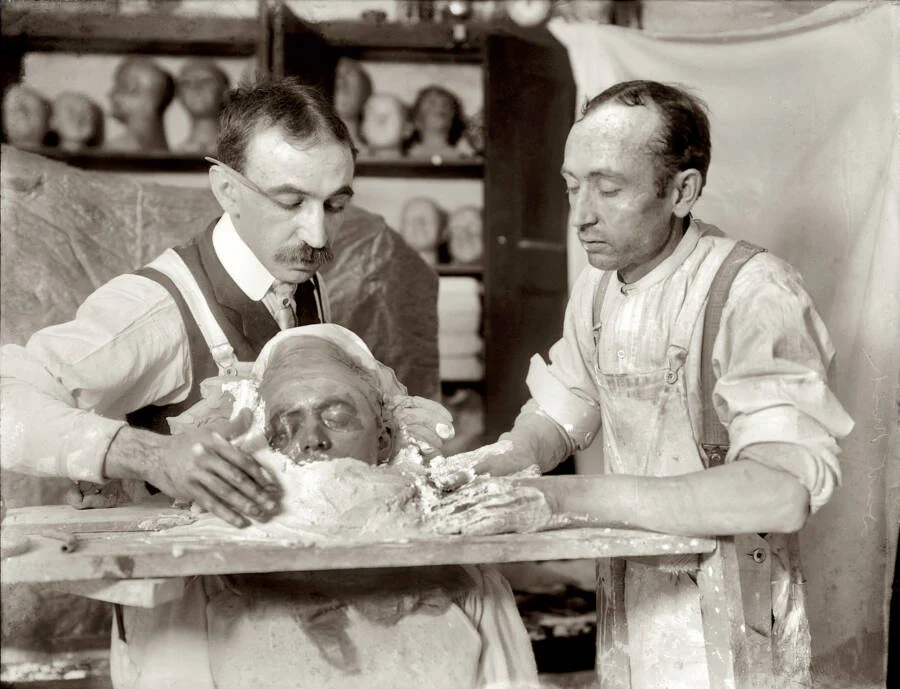
Adding to the somber atmosphere, Victorians frequently adorned their surroundings with memento mori, symbols or reminders of death. The literal translation of this phrase is "remember you must die." To the Victorians, it signified the importance of honoring the deceased and served as a constant reminder for the living to acknowledge their own mortality.
Creating death masks was an additional method through which Victorians commemorated the departed. As per Laurence Hutton, a 19th-century collector, a death mask "must, of necessity, be absolutely true to nature."
In the effort to replicate the likeness of a deceased individual, a mask maker would apply oil to the face and then press plaster onto the features. Occasionally, this process resulted in a visible seam down the middle of the face or emphasized beards and mustaches, as the hair was flattened during the application.
While the Victorians did not originate the concept of death masks, which has ancient roots, they distinguished themselves with a notable preoccupation for both crafting and possessing these masks.
Death masks of loved ones found a place on family mantels. Certain doctors provided the service of creating death masks for notorious criminals after pronouncing them dead. Furthermore, the burgeoning phrenology industry, a pseudoscience exploring mental traits through skull bumps, utilized death masks as instructional aids.
Fake Victorian Post-Mortem Photos
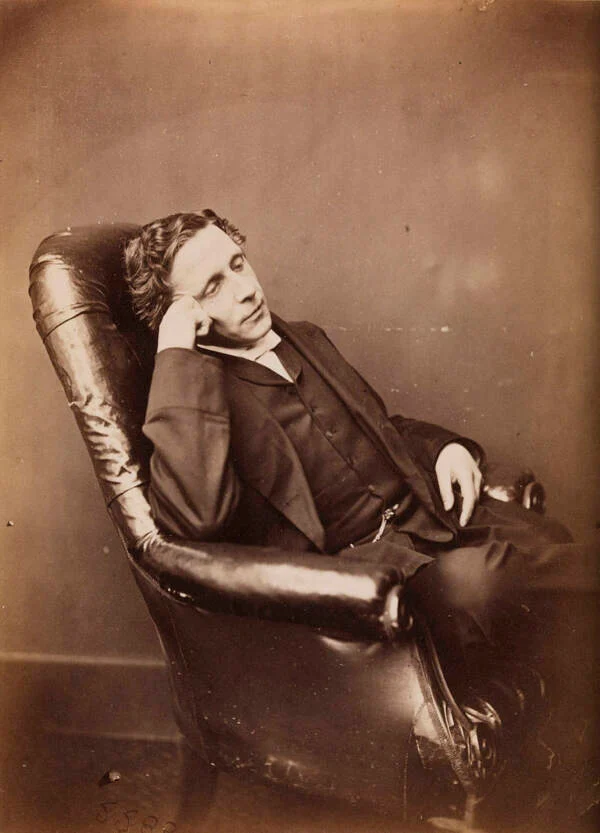
In contemporary times, some Victorian death photos circulated online are either forgeries or images of the living erroneously perceived as deceased.
Consider a frequently shared image of a man lounging in a chair. Numerous captions assert, "The photographer posed a dead person with his arm supporting the head." However, the photograph in question is actually a picture of the author Lewis Carroll, captured years before his demise.
Mike Zohn, proprietor of Obscura Antiques in New York, provides a useful guideline for examining Victorian death photos: "As simple as it sounds, the big general rule is if they look alive — they're alive."
While certain Victorians attempted to infuse vitality into photographs of the deceased—such as adding color to the cheeks—the predominant goal for the majority was simply to immortalize the image of a departed loved one.
Although the majority of us today might find it difficult to fathom such practices, it is evident that, during a period of considerable hardship, this custom provided the Victorians with a means to cope with their grief.
